Bigfoot, hairy creature of the forests
When we start talking about Bigfoot, we are also talking about Sasquatch. Both describe the same tall, hairy human-like species that many people believe lives hidden in the forests. And there are a lot more names out there for similar creatures. According to “Abominable Science”, written by an paleontologist/geologist and an outspoken skeptic, the origin of all great American mysteries of apes lies in ancient storytelling. It all began with Native Americans who told stories about mysterious hairy people in the woods or on mountains.
The Sasquatch was just the most popular one. He is the Canadian version of Bigfoot and became popular because of J. W. Burns, a collector of local legends for a Canadian newspaper. It all happened during the 1920s and a long lasting legend was born: The real Sasquatch did not look like how it is pictured today. Performing a google picture search produces a lot of very hairy results. But native Americans talked about being in contact with hairy giants. According to Abominable Science (p.34), those giants were described as “basically giant indians” who lived in villages, knew fire, clothes and weapons, but avoided civilization. They were called hairy giants because they had long (head) hair.
The name Sasquatch persisted for quite a while. Almost 40 years later it gave way to Bigfoot – because of a publicity stunt. The town of Harrison Hot Springs funded a hunt for Sasquatch with $600, to celebrate the centennial of British Columbia. The legend of Sasquatch spilled over into the US and the name Bigfoot became increasingly popular the more Bigfoot-prints were found. But why Bigfoot? Well, in 1958 The Humboldt Times columnist Andrew Genzoli used the term in one of his articles to describe the discovery of a very large footprint. And since then people have almost exclusively used the name Bigfoot, a lot of more footprints have been found and shaky movies have been shot. A legend was born.
5 of the most successful conquerors
When an animal invades a new habitat this does neither need jet fighters nor bombs. There is neither a political conflict about it, because normally, nobody recognizes the invasion until it’s too late – meaning that endemic species, to speak animals that are home in that habitat, are suppressed. Here, we present you those animals, that had the most successful strategy:

Black Squirrel CC BY 3.0 by BirdPhotos.com/wikipedia.com: http://en.wikipedia.org/wiki/File:Eastern_Grey_Squirrel.jpg
This little guy looks really sweet, right? Perhaps that a quite clever disguise to take an innocent and sweet look. At least, that’s how the Grey squirrel made it’s way from America to Europe – where it competes for nuts with the endemic Red squirrels.

Zebra Mussel – CC BY-SA 3.0 by GerardM, wikipedia.com: http://en.wikipedia.org/wiki/File:Dreissena_polymorpha.jpg
Not really movable on itself, the Zebra mussel sneaked into North America in ship’s ballast water. Quite a clever way to hide, right? But nowadays the time to hide is over: it’s clogging water filters, pipelines and attaches to almost anything in it’s surrounding.
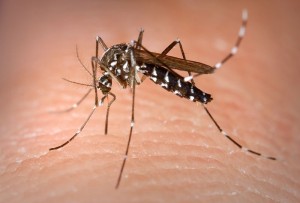
Asien Tiger, public domain by Centers for Disease Control and Prevention’s Public Health Image Library
What do you think: Did the Asian tiger mosquito fly all the way from Southeast Asia into other parts of Asia and even to Europe? It is believed to be the most-widely distributed animal (being abundant in 28 countries outside of it’s native range)
The Spanish slug is not longer munching it’s way through Spanish and Portuguese lettuce patches, but conquered also other patches throughout Europe – it is not only that they thread agriculture, but are also considered a danger for natural ecosystems.

Goat, CC BY-SA 3.0 by Armin Kübelbeck, wikipedia.com: http://en.wikipedia.org/wiki/File:Hausziege_04.jpg
Harmless in most parts of the world, unexpectedly it is goats posing a threat on the biodiveristy of Galapagos Islands for example. Here it is considered to be the most damaging invasive species.
Dude, you stink! – a list of species with a bad taste in perfume.
While looking up species for this list, a thought almost inevitably pops up in my mind. What would our daily lives be like if we were to share the characteristics of the species in this post. It could be kind of funny, but the world would stink terribly, that’s for sure. This is a list of just four species – but feel free to add to it in the comments section below. Let’s start:

Garlic Toad – Creative Commons Attribution-Share Alike 2.5 Generic // wikipedia: http://bit.ly/OqgzDB
First of all is a toad. It’s a pretty small one, just between 6,5 and 8 centimetres in length, even the color is not very remarkable. The toad is grey or brown. If you live somewhere between Europe to Western Asia you may have come across them without noticing. But if you stress this little fella, better run. The toad’s name is Garlic Toad, so you get an idea of what’s in store for you, right? If the toad is alarmed, it makes a very loud call and exudes a noxious secretion which smells like – yes, garlic.
The stink bug does not try to hide what it is. The bug stinks, again, if in distress. And also again, the smell reminds of a cooking ingredient – coriander in the bug’s case. The strongly smelling substance is secreted from pores on its chest. As an aside – one will probably like the smell, it seems to be down to your (human’s) DNA whether or not you’d find the smell unpleasant. And we stay in the kitchen: In Laos the bugs are commonly eaten and are regarded as delicious due to their extremely strong odor. Yummy.

Wolverine – Creative Commons Attribution-Share Alike 3.0 Unported / wikipedia: http://bit.ly/1kRlMSO
We leave the insect world for the third species on our smelly list. The wolverine is not exactly what you would think about as a comic book reader. There are no metal implants in the skeleton, but it’s a hairy creature as well. The wolverine we are talking about here can be found in larger numbers in nothern Canada or Alaska, even in the boreal forests and the tundra in Russia. It belongs to the family of the weasels, but looks more like a little bear. That’s where one of it’s nicknames originates from: skunk bear. Yes, the skunk is up next to complete our list. But anyway, the wolverine has potent anal scent glands he uses for marking his territory (and sexual signaling of course). We won’t delve into this subject any further.
Finally, the skunk. Skunks are mammals often found in the Americas. They are notorious for their anal scent glands, which they can use as a defensive weapon. Bad news is, they have two glands, one on each side of the anus. These glands produce a mixture of sulfur-containing chemicals which have a highly offensive smell. The odor is strong enough to ward off even bears and it can be really difficult to remove from clothing.
5 really clever defense strategies of animals
Without the massive budgets that humans lavish on their territorial defense, animals have to turn to creativity to protect themselves from enemies – or attack them.
Researchers recently discovered, why the tawny crazy ant was so successful in invading the fire ants territory (which the latter may have stolen from the former, previously): when a fight with a fire ant is looming, tawny crazy ants secrete an acid they cover their body with (they rub their body with their legs to spread the chemical). This chemical protects them from the toxic attack of fire ants.
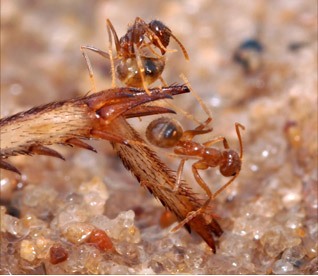
Tawny crazy ant standing on cricket leg, expressing detoxification behavior. (Photograph by Lawrence Gilbert)
To defend their colony, termites were found to sacrifice themselves for their colleagues’ sake. Being threatened, they grow a sack with toxic liquids on their back, which then explodes spreading the toxins all over nearby enemies – as well over the termite itself.
Most people don’t like anything that is about inner body parts. For the sea cucumber‘s enemies, this might certainly be an issue: If feeling threatened, sea cucumbers expel their internal organs rapidly – which are sticky and partly toxic. The creatures may not be missing their body parts for long: they can regenerate the organs.
When the bones in your legs break you’d immediately get to a doctor to get them to put a cast on. You’d never think of breaking your arms or legs on purpose. But for the Hairy frog breaking its toes is an effective way of defending itself. Facing an attacker it breaks its own toes, pushes the splinters through the skin, which then act as tiny sharp claws.
If you don’t possess any of the above skills, there’s only one thing left, that might help: pretending you’re dead. That’s what Fainting Goats do. When frightened, their muscles seize up for about 15 seconds – and they just fall over.
Top5: You better steer clear of these venomous (or poisonous?) animals
When we start talking about animals that can easily kill or at least terribly hurt humans, we have to start with a clarification: There’s a difference between venomous and poisonous creatures. The difference lies in the delivery of the toxic material that harms a human being. Let’s say, a king cobra bites you, it delivers the poison by performing an action. That’s called venomous. If you, on the other hand, happen to eat incompetently prepared toxic puffer fish (or Fugu), it’s called poisonous. The fish does not take action but scores a strike anyway. Fugu is considered to be a delicacy in Japan, by the way. When its organs, which are covered by neurotoxins are hurt, the meal could easily become the last one for the brave eater.
So how do we compile this list of the Top5 of venomous (or poisonous) animals? We take the deadliness of the candidates into account. And here are the winners of the competition, remarkably enough most of them live in the oceans:
But let’s stay out of the water first. The poison dart frogs are a group of frogs (Dendrobatidae) in various colors from blue to red or black. The most deadly species is called the golden dart frog. It caries enough venom to kill 10 grown men. The frogs were given the name by the indigenous people of Colombia who used the strong toxic to tip their blowgun darts for hunting.
You have to look twice to not step upon the second member of our list. The stonefish got its name from its ability to camouflage itself by donning stone like colors. But what is so dangerous about this fish? Along the stonefish’s back a row of 13 venomous spikes is protruding from its spine. It does not really attack its victims, but squeezed or pressured the spines release their venom. The result is terrible pain, muscle weakness, shock and – if untreated – death.
The next sea creature in our list you better not pick up as well. The marbled cone snail has a sting to protect itself from enemies. But also to attack , if a careless collector comes up with the slightly stupid idea to grab the marble housing. As there is no antidote available, touching the snail most commonly is followed up by an initial sharp pain, paralysis and may result in death within 2 to 6 hours.
Number four: The Blue-ringed octopus is as deadly as any other of the competitors in the list. And it is malicious because it bites and the bite is said to be painless. If bitten the clinical effects depend on how much of the venom was transferred into the wound. Usually the symptoms set in fast. Within minutes, the victims feel numbness, muscular weakness and difficulty breathing and swallowing. Death is possible. Experiments with the venom concluded that a single adult octopus is able to fatally paralyze 10 adult humans.
We started the list with a blue species and we are going to finish it the same way. The box jellyfish (or sea wasp) got it’s name from the shape of their bell. The jellyfish’s toxic is delivered through it’s up to 3 m (10ft) long tentacles to attack the victim’s heart, nervous system, and skin cells. Because of its painfulness, human victims may go into shock or die by heart failure. It’s possible to survive attacks, but survivors experience long-lasting pain and often have scars where the tentacles made contact.
Stay save out there.





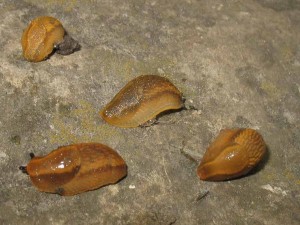
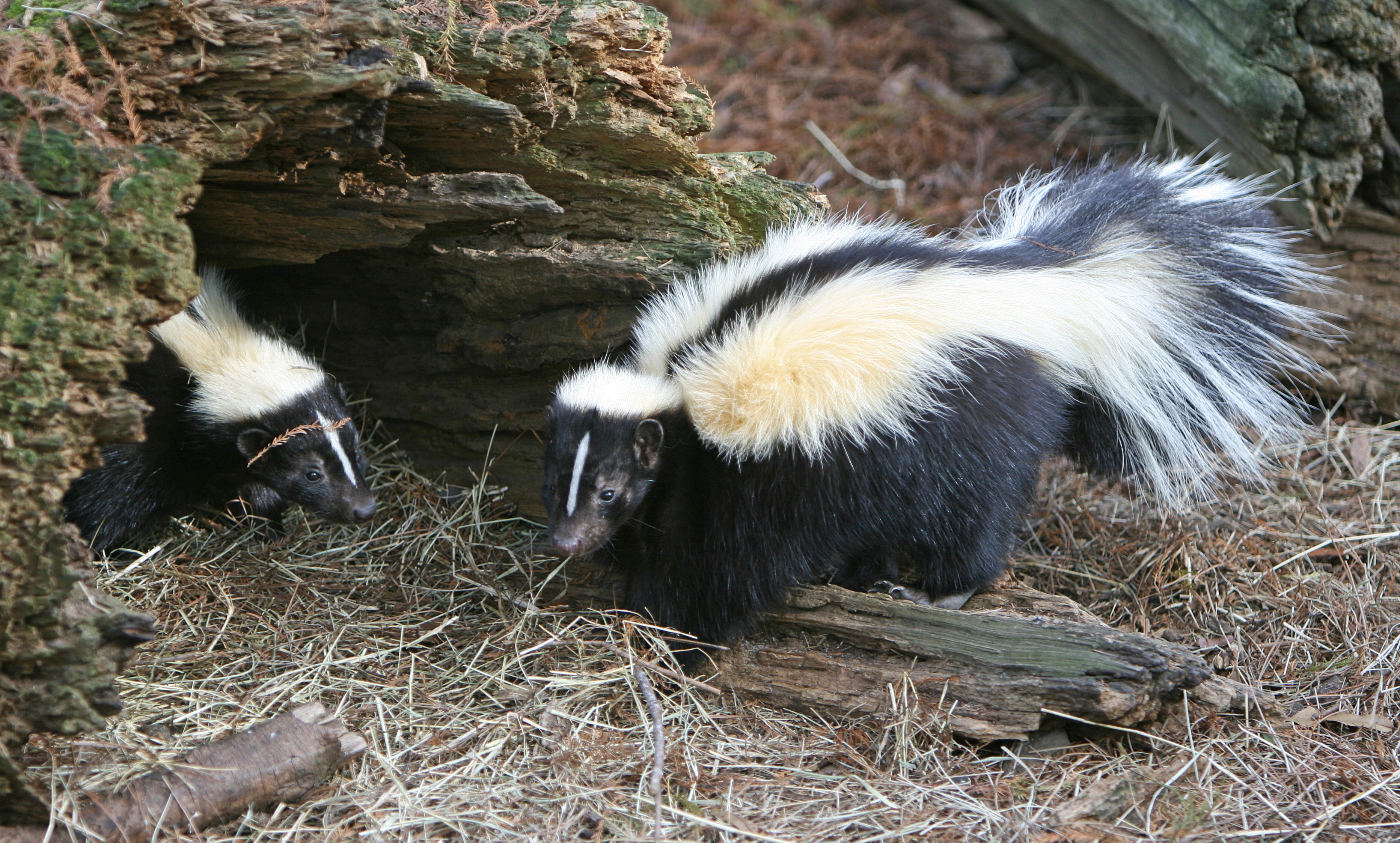
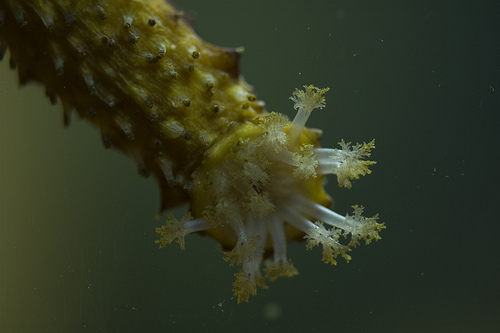

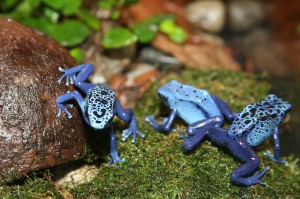
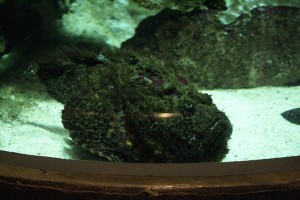

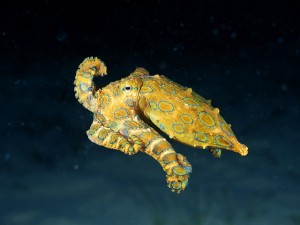
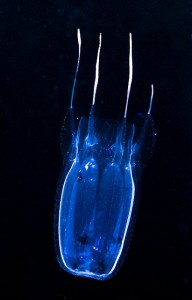




Feedback